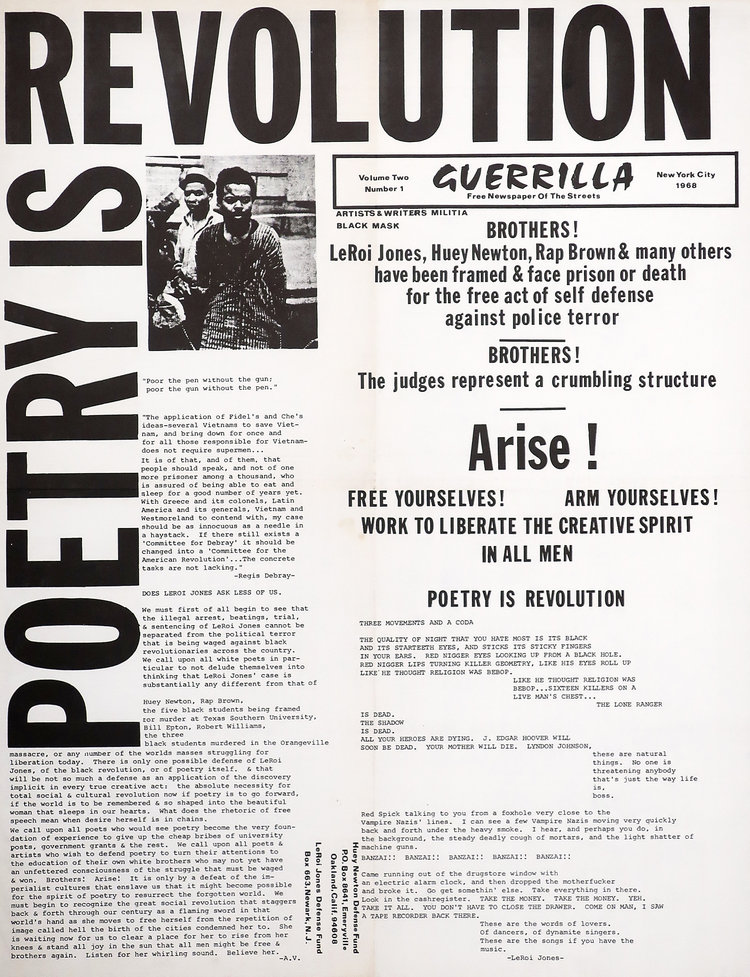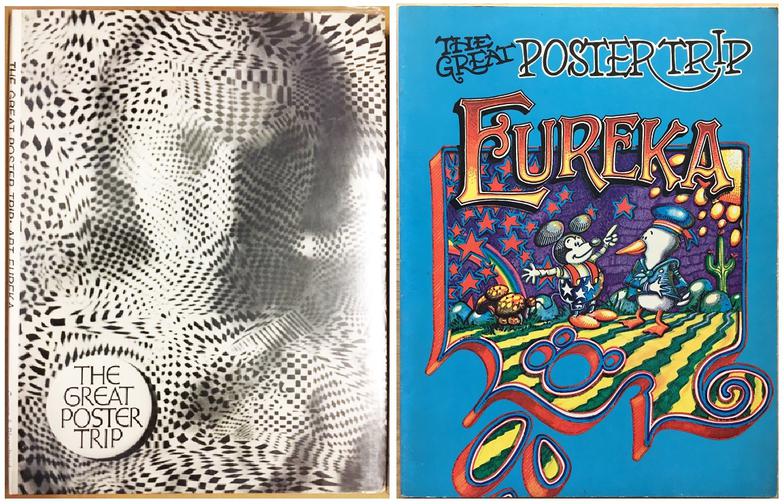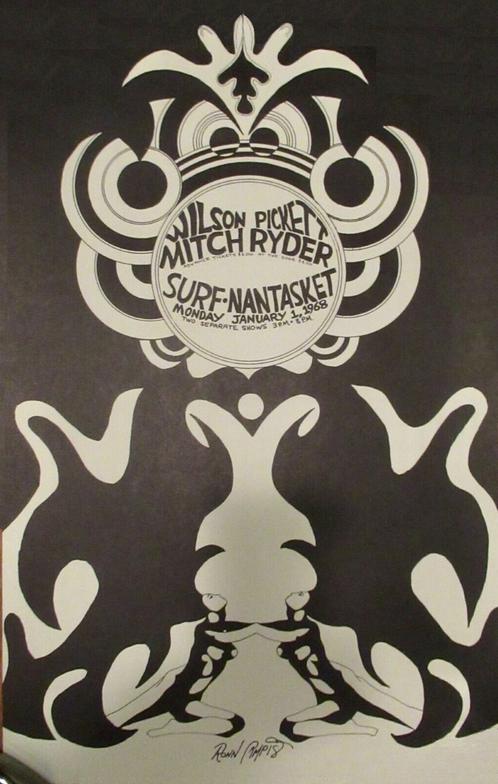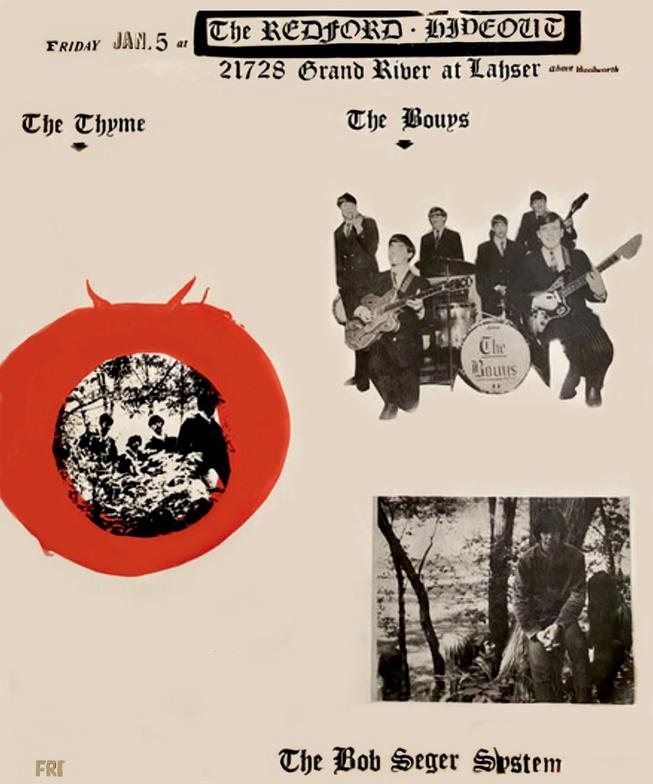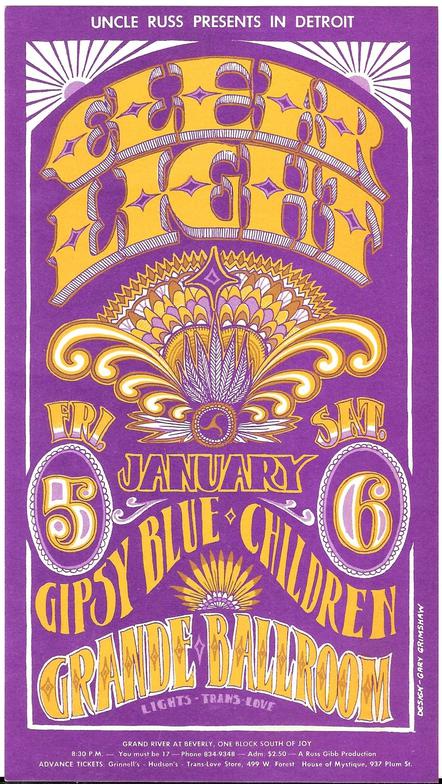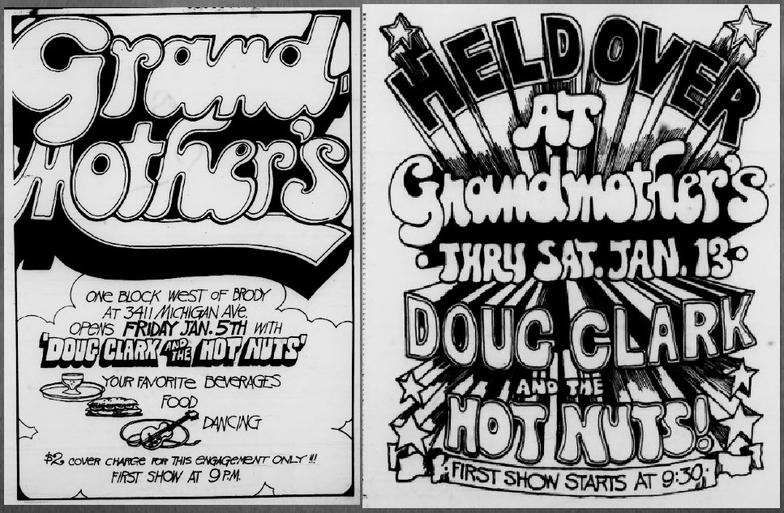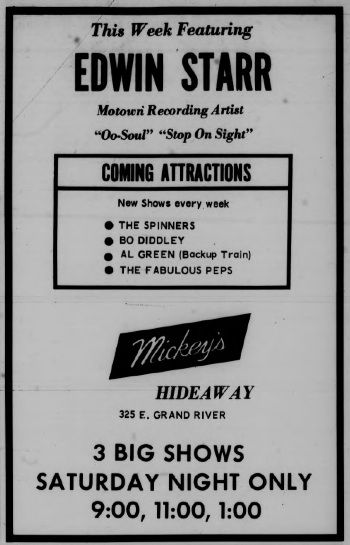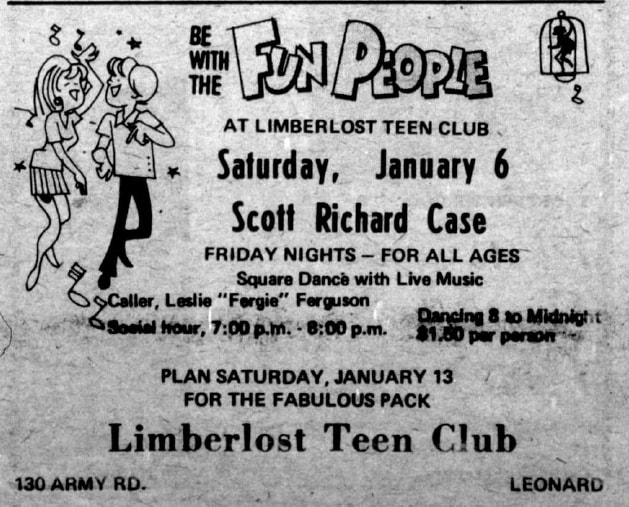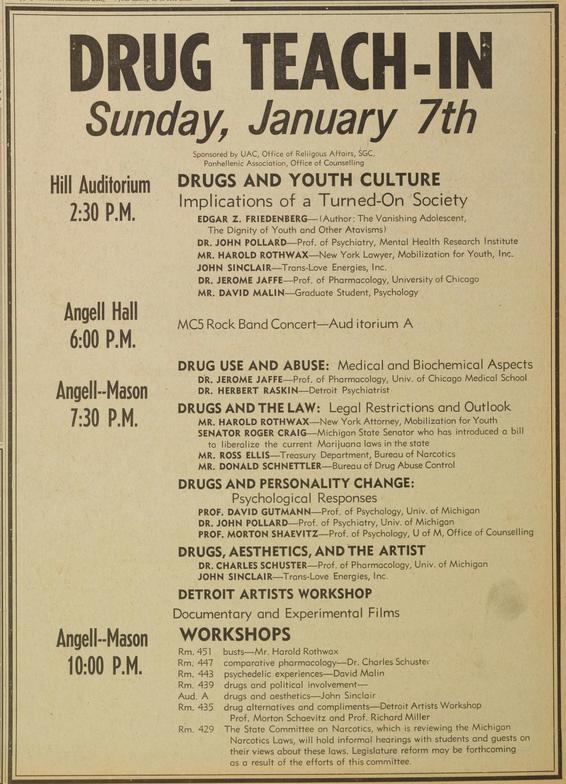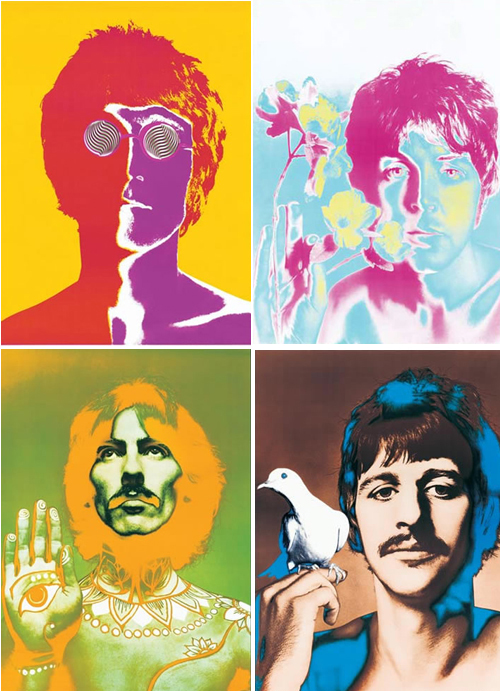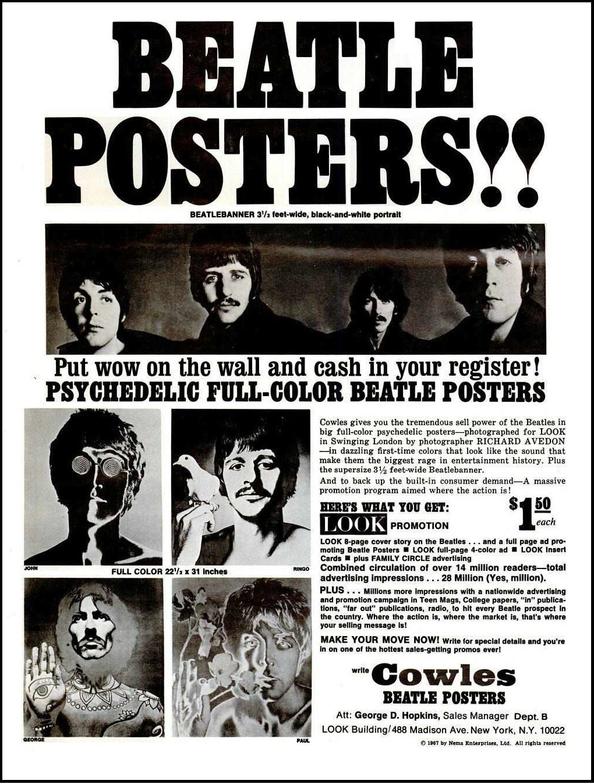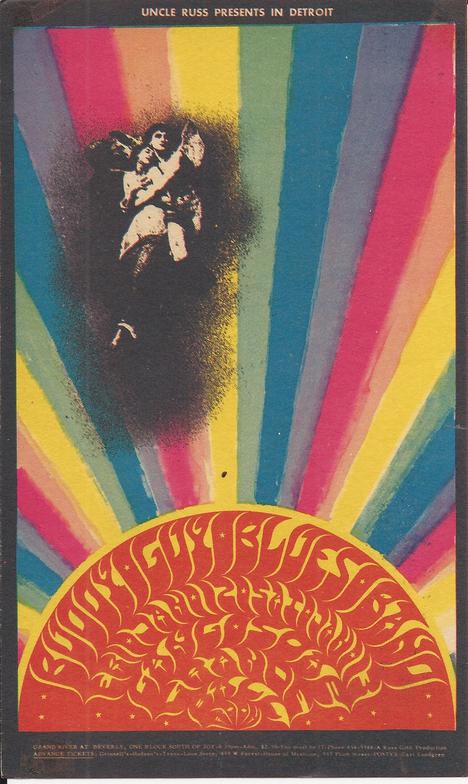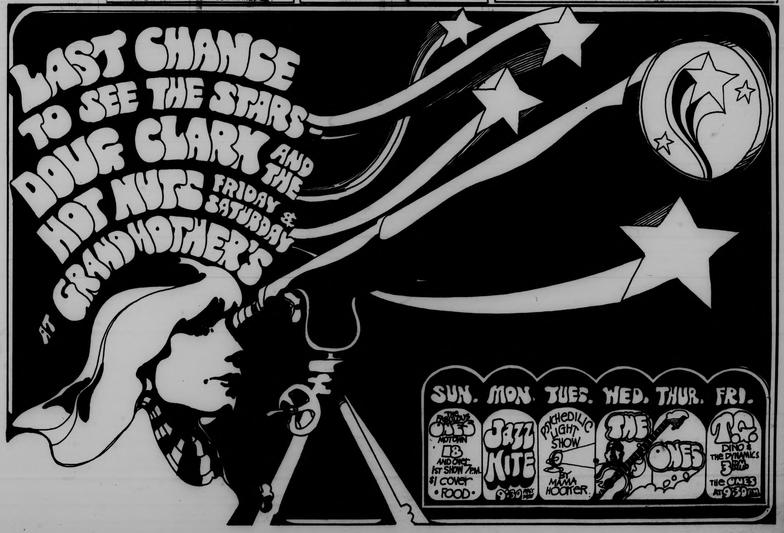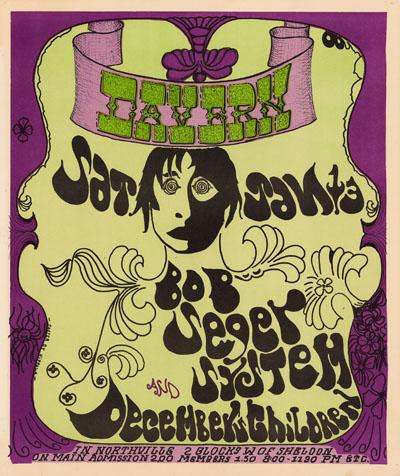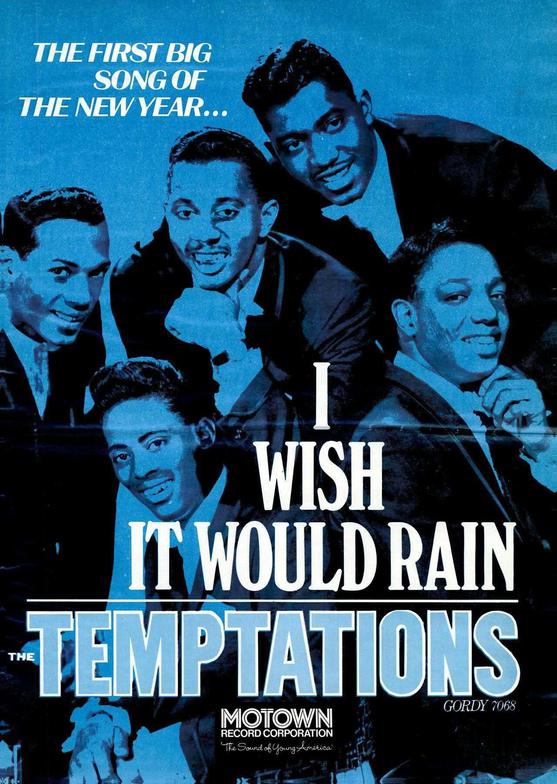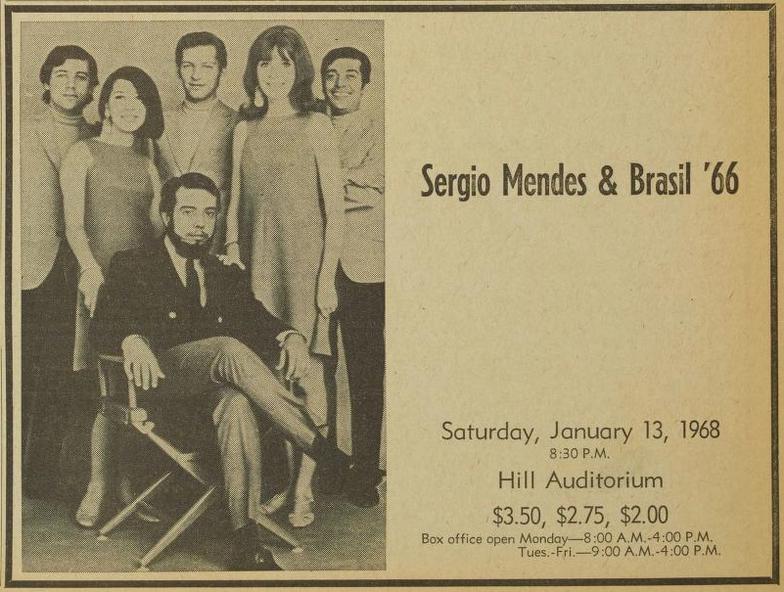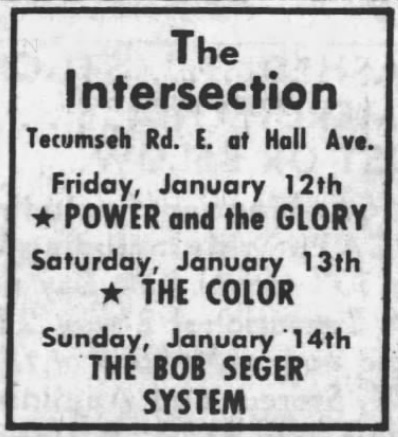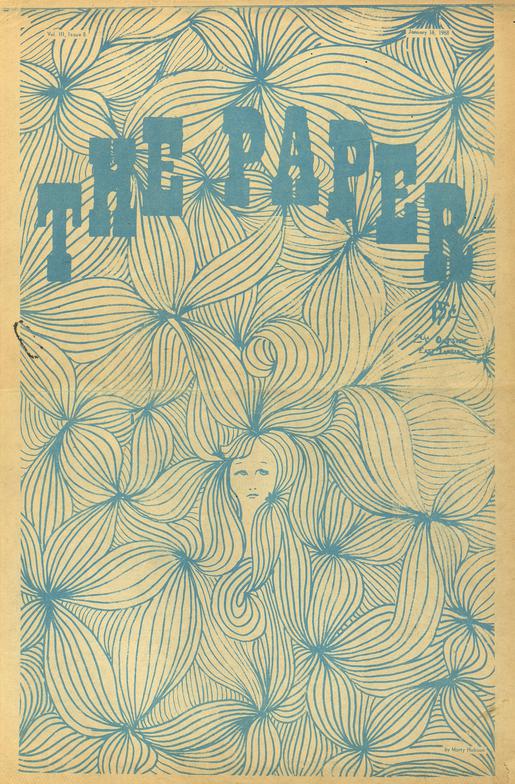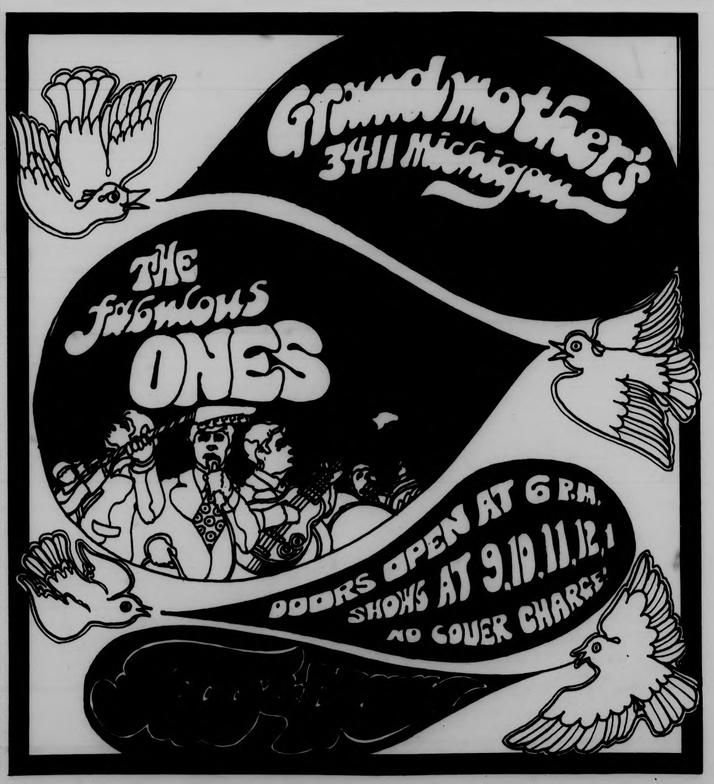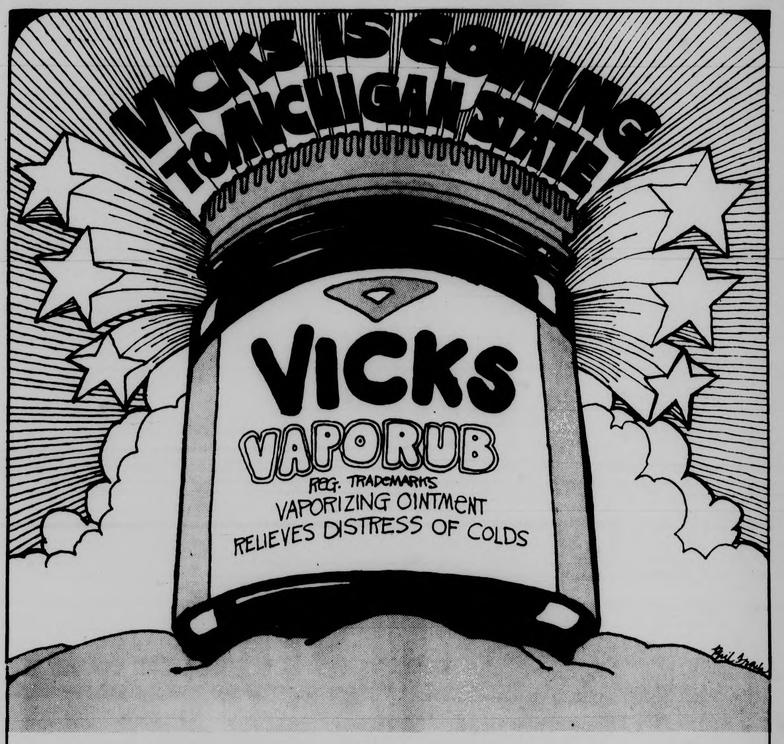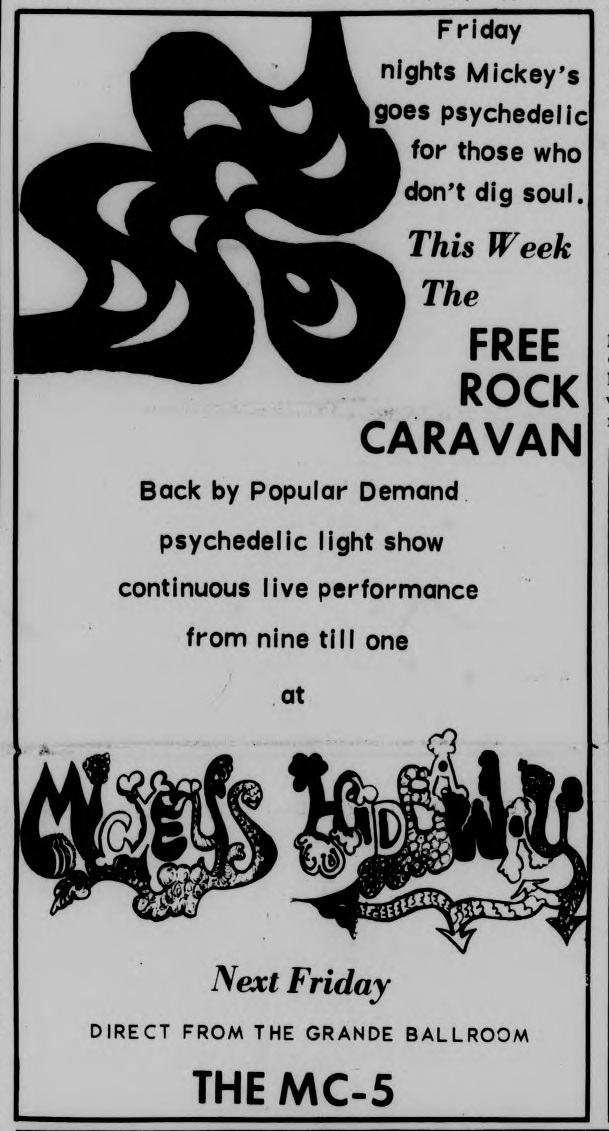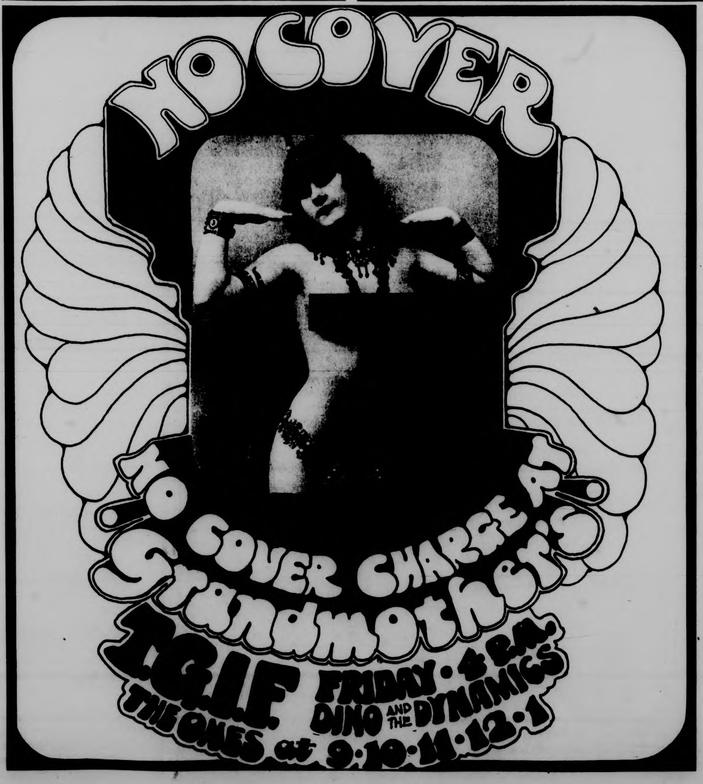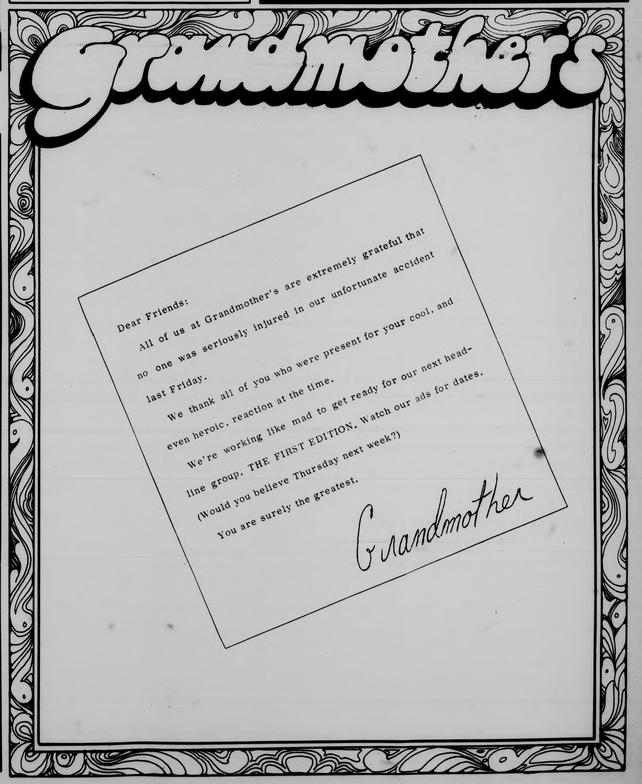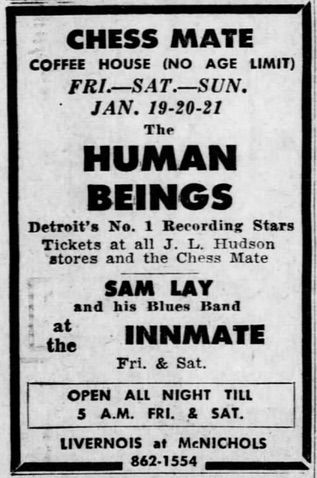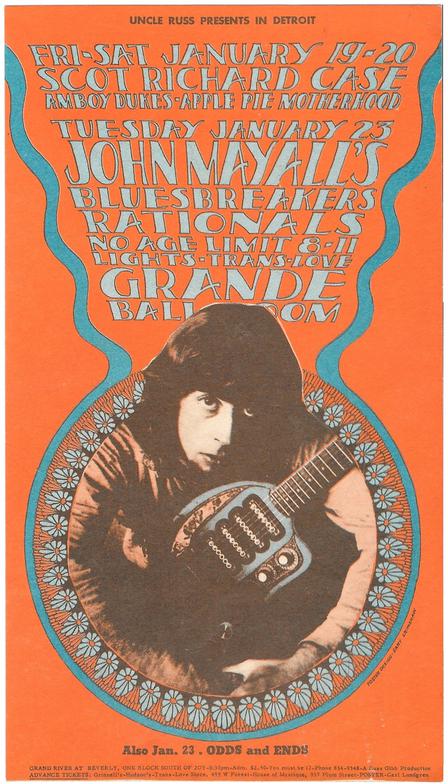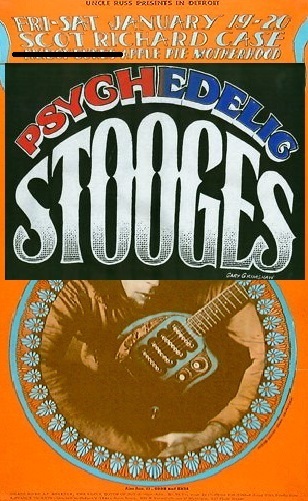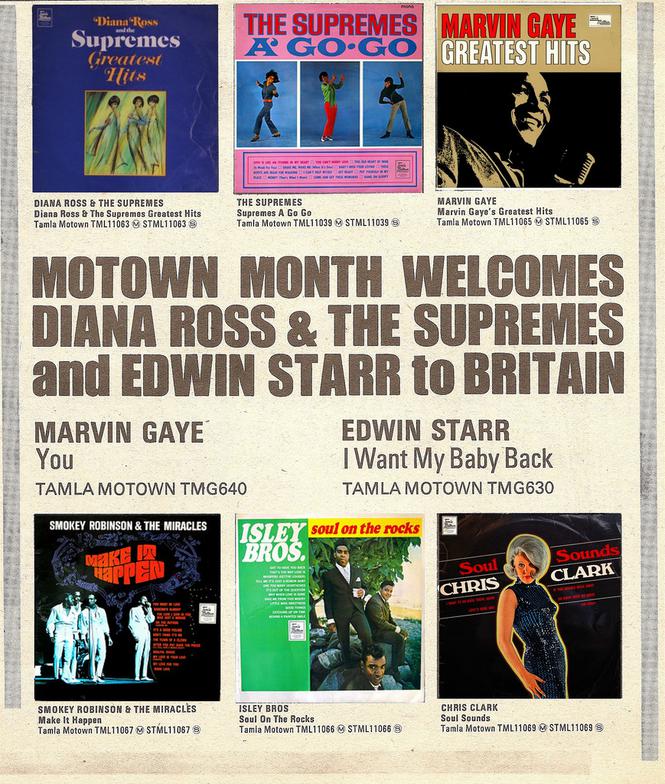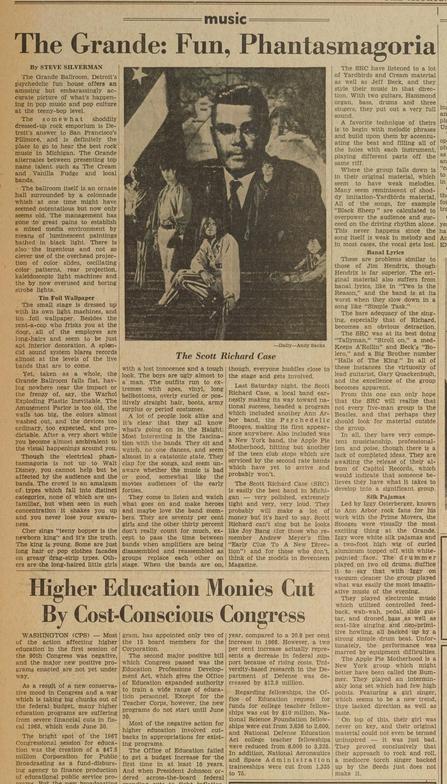Splatt Gallery
Double click here to add text.
Splatt Gallery's History of Michigan Concert Posters
Volume Four - 1968
**********************************************************
Allen Van Newkirk had relocated from Detroit to New York City and after a brief attempt to continue to publish the Guerilla magazine, he decided that posters were easier, quicker, and cheaper to produce and issued this first one in January, 1968. His “Poetry Is Revolution” layout later became the background for a popular poster of John Sinclair.
“The Great Poster Trip” published by Coyne & Blanchard of Palo Alto, California in January 1968 is considered to be the first book publication covering the psychedelic poster art of San Francisco. The book is 79 pages and features over 200 images, 30 of which are in full color. The front of the hardcover edition is shown on the left, and the softcover edition, with front cover illustration by Rick Griffin, is shown on the right.
A nice poster by an unknown artist for Mitch Ryder and Wilson Pickett at Surf Nantasket in Hull, Massachusetts on New Year’s Day, January 1, 1968.
Poster/flyer by an unknown artist for the Redford Hideout in Redford, Michigan with the Thyme, the Bouys, and the Bob Seger System appearing on January 5, 1968.
The 66th weekend at The Grande Ballroom, January 5-6, 1968, the first shows of the new year, featured Gary Grimshaw’s 34th poster for the venue. Clear Light from Los Angeles headlined both night with openers Gipsy Blue and Children. This image was originally printed only as a postcard.
A new student bar opened in East Lansing near the Michigan State University campus, called Grandmother’s (later to become The Brewery and later, The Silver Dollar Saloon). For the next three years, Terry Sharbach, an art student from Farmington, Michigan, will create a distinctive body of poster work for the venue.
These initial examples start off with Terry’s bold lettering style, the balloon cursive logo for Grandmother’s with just a hint of his clean, simple illustrations, which later posters will show an uncanny ability to capture the likenesses of famous subjects.
Doug Clark & the Hot Nuts were the prototypical frat party band, an all-black group from Chapel Hill, North Carolina who had been playing shows and recording albums of bawdry, risqué novelty songs since 1961. They offered their potential clients their choice of degree in their shows, ranging from “slightly gross” to “gross” to “extremely gross”, the level that usually entailed on-stage nudity. Their near-dozen albums, with titles targeted towards their lucrative college audience like Rush Week, Panty Raid, and Hell Night were released on their own Gross label. They may still be available for hire today.
Doug Clark & the Hot Nuts – Bang Bang Lou Lou (1963)
https://www.youtube.com/watch?v=RC0GougWQ5o
Also arriving in East Lansing at the beginning of the school year in September, 1967, was Mickey Shapiro from Southgate, Michigan who had developed friends and contacts within Motown, particularly with singer Edwin Starr. Within weeks, he had convinced the owner of Spiro’s Restaurant to use his facility for weekend shows, calling it Mickey’s Hideaway and bringing in The Contours and other Motown acts.
This flyer from a January 6, 1968 performance by Edwin Starr also lists an impressive line-up of up-coming shows, including Al Green still before his national break-out, still riding on his “Backup Train” record.
The Fabulous Peps just had their new single issued as the first release on the Martha Jean “The Queen” Steinberg’s new Premium Stuff label. Long-time readers will recall our earlier story of how this housewife from Memphis rejected the traditionally expected role of women in radio and how she brought her “Premium Stuff” to Detroit in 1963, landing a disc jockey job at WCHB. In 1966 she moved over to the larger WJLB, where during the riot she stayed on the air for 48 hours straight urging calm. After the riot she started a regular call-in show called “Buzz the Fuzz” where callers could talk directly to representatives of the Detroit Police Department in an effort to improve community relations.
The Fabulous Peps – I Can’t Get Right (1967)
https://www.youtube.com/watch?v=zaGQI_XvYEI
An ad for the Scott Richard Case at the Limberlost Teen Club in Leonard, Michigan on January 6, 1968.
An ad for a “Drug Teach-In” at the University of Michigan in Ann Arbor with a concert by the “MC5 Rock Band” as part of the program on January 7, 1968. The MC5 timeline does not list this show, so it is another “found” show.
A review of the event in the Michigan Daily newspaper a couple of days later confirmed that “real live hippies” from Detroit, “John Sinclair and his court arrived to give Ann Arbor a glimpse of their Thing”. The concert was briefly described as “an interlude of music of electric cables wound through amplified drum beats”, whatever that means, but one attendee told guitarist Wayne Kramer, “When you played, it made me want to come up on the stage too.”
“Why didn’t you?” Sinclair cried. He was happy, very happy, and his face had the simple joyful look of some kid who finally made a friend.
“As ‘sweet smoke’ was passed around, Gary Grimshaw, panel member, commented, ‘People in the dope culture have turned their whole lives into works of art.’”
Famed photographer, Richard Avadon popped up in our story earlier when he helped launch the career of the world’s first black super-model, Donyale Luna from Cass Tech High in Detroit. On the cover, and within the pages, of the January, 1968 issue of LOOK magazine, Avadon’s psychedelic images of the four Beatles instantly struck a chord and remain among the greatest iconic images of the sixties.
The Beatles – Strawberry Fields Forever (1967)
https://www.youtube.com/watch?v=8UQK-UcRezE
The Avadon LOOK posters were a sensation and were quickly capitalized. This ad shows the price of $1.50 each ($10.68 in today’s dollars) and a special package deal of $5.95 ($42.38 today) for the complete set with bonus poster, plus 25-cents ($1.78) for shipping.
The 67th weekend at The Grande Ballroom, January 12-13, 1968 featured Carl Lundgren’s sixth poster for the venue, two nights with the Buddy Guy Blues Band. Opening local bands were the Gang on the first night, and Soap on the second night. This image was originally printed only as a postcard.
Following the opening eight-night stand by Doug Clark & the Hot Nuts, Terry Sharbach’s poster for the upcoming week at Grandmother’s in East Lansing shows multiple nights with The Ones.
The night that the Nuts were wrapping up their stay at Mickey’s in East Lansing, Bob Seger made his second appearance at The Cavern in Northville, January 13, 1968. This sweet poster is signed by an artist named “Kippola”.
December’s Children from Cleveland were still a Motown covers group at this point, just a bit prior from becoming a psychedelic hard rock band.
Full-page Motown Records ad in the January 13, 1968 issue of Billboard magazine for the single by the Temptations, “I Wish it Would Rain”. Talk about heartbreak, Motown staff writer Rodger Penzabene, who penned the lyrics following his discovery of his wife’s infidelity, committed suicide on New Year’s Eve 1967, a week after the single’s release.
The Temptations – I Wish it Would Rain (1967)
https://www.youtube.com/watch?v=BrjJeP1GGxY
A fixture of my parents’ record collection, Sergio Mendes & Brazil ’66 made their sixth Michigan appearance in three years with this appearance at Hill Auditorium in Ann Arbor on January 13, 1968. I think this was the year that my Dad grew a goatee.
Sergio Mendes & Brazil ’66 – Mas Que Nada (1966)
https://www.youtube.com/watch?v=BrZBiqK0p9E
An ad for the Intersection in Windsor, Ontario, Canada with the Bob Seger System on January 14, 1968.
The front page of the January 16, 1968 issue of The Paper in East Lansing, Michigan. Artwork by Marty Hobson.
Nice ad by Terry Sharbach, for The Ones at Grandmother’s in East Lansing, Michigan, January 17, 1968. No idea what it says on the black word balloon.
An ad for Vicks VapoRub by Phil Frank that appeared in the January 17, 1968 issue of the State News newspaper in East Lansing, Michigan.
When Mickey Shapiro from Southgate, Michigan arrived in East Lansing and convinced the owner of Spiro’s Restaurant to use his facility for weekend shows, calling it Mickey’s Hideaway, he naturally used his Motown connections to bring top soul and Motown acts to town, but he also decided to use the Friday nights “for those who don’t dig soul”, to bring in rock groups. He booked a group called the Free Rock Caravan for January 19, 1968 and for the following week, it would be The MC5 “Direct from the Grande Ballroom”.
Ad, probably by Terry Sharbach, for The Ones at Grandmother’s in East Lansing, Michigan, January 19, 1968. The T.G.I.F. festivities began early, with a set by Dino & the Dynamics starting at 4pm, followed by five sets by The Ones. This is the night that the ceiling of Grandmother’s collapsed between sets. "No Cover" takes on an ominous double-meaning.
An open letter from Grandmother’s in East Lansing, Michigan, regarding the collapse of the ceiling on January 19, 1968.
An ad for the Human Beings at the Chess Mate club in Detroit, Michigan, January 19-21, 1968. The claim of “Detroit’s No. 1 Recording Stars” was a bit out of date, it may have been true at the beginning of 1966, when they had three singles on the market, two released by Harry Balk’s Impact Records, and one picked up by Warner Bros., but there had not been, and won’t be, anything since.
Mitch Ryder had at least three singles, possibly more, released by early 1966, nearly all of them on Bob Crewe’s New Voice Records. The Reflections had at least a dozen singles released by early 1966, mostly on Golden World, including a Top Ten hit “(Just Like) Romeo and Juliet”. The Royaltones, with guitarist Dennis Coffey, had released ten singles by 1964, the year they disbanded, and they also performed on Del Shannon’s singles, who by the way, also had released six by the beginning of 1966. And they are also forgetting about Jack Scott, who by the beginning of 1966 had released close to 40 singles, with at least nine that made the Top 40.
So, we give credit to the Human Beings for sheer chutzpah.
Incidentally, this band is not the Human Beinz from Struthers, Ohio that had the 1967 hit "Nobody But Me".
The ad also shows Sam Lay at the Inn Mate, which was recently opened by Morrie Widenbaum, the 1963 Michigan chess champion and owner of the Chess Mate, which was located about a block away.
The 68th weekend at The Grande Ballroom, January 19-20, 1968 featured Gary Grimshaw’s 35th poster for the venue, as he and Carl Lundgren continued alternating weekly. The line-up for both nights was Scot Richard Case with the Amboy Dukes and Apple Pie Motherhood from Boston, although the Amboy Dukes would cancel the second night and would be replaced by the debut performance by the Psychedelic Stooges.
The Tuesday night show by John Mayall on January 23 would be Mayall’s first Michigan appearance. The Rationals and Odds & Ends opened.
This image was originally printed as both a 13” x 22” poster and as a 4” x 7” postcard.
What the previous poster could not document is that the Amboy Dukes, on the poster as the opening act for January 20, 1968, had to cancel and were replaced that night by a new group from Ann Arbor called The Psychedelic Stooges in their first true public appearance.
When we last left Jim “Iggy” Osterberg, he was working at Discount Records in Ann Arbor and commuting to Chicago for periods of stays studying blues drumming with the master Sam Lay. As you can hear him say for himself in the following video, Iggy “wanted to be him”, and Lay was a huge influence, not so much on the drumming side as much as for opening his mind to larger possibilities beyond the blues, both musically and in presentation.
Two other incidents, which we’ve previously described; becoming roommates with Scott Richardson and witnessing Jim Morrison’s debacle at the U of M Homecoming dance, both further led Iggy to abandoning the drums.
For months, Iggy had hung out at Ron Asheton’s house, getting high and talking about forming a band with Ron and his brother Scott. They did more of the former activity, but occasionally Iggy would coax them into semblances of rehearsals. Ron played bass and guitar, Iggy was teaching Scott to play drums, and for himself, Iggy was experimenting with an assortment of instruments from piano, organ, toy Hawaiian guitar, oil drums, vacuum cleaner, and homemade contraptions, including the “Jimaphone”, a phone receiver in a funnel connected to an air blower, and the “Osterizer”, a microphone in a blender half-filled with water.
They decided to call themselves The Psychedelic Stooges, obviously inspired by their favorite activity of watching TV while tripping, and the feeling of alienation that the Asheton brothers and their friend, Dave Alexander, felt living in a town largely populated by threatening jocks and frat brothers which made the three of them (the three stooges) band together for survival.
Their first public performance of the cacophony that they could produce was at a Halloween party in Ann Arbor in October, 1967. Then they got a call that the Amboy Dukes had cancelled a scheduled appearance on January 20, 1968 at the Grande Ballroom.
Their 18-minute free-form performance with the above-mentioned instrumentation left the audience asking WTF, as was to become the general reaction to the band. This night they had performed as a trio, quickly after this, they brought in Dave Alexander on bass and Iggy switched over exclusively to vocals.
(Notice the nice logo that Gary Grimshaw made for the band.)
Bluesland movie trailer
https://vimeo.com/130815177
A Motown records ad announcing a two-week engagement at at London, England’s Talk Of The Town from January 22, 1968 through February 3rd.


